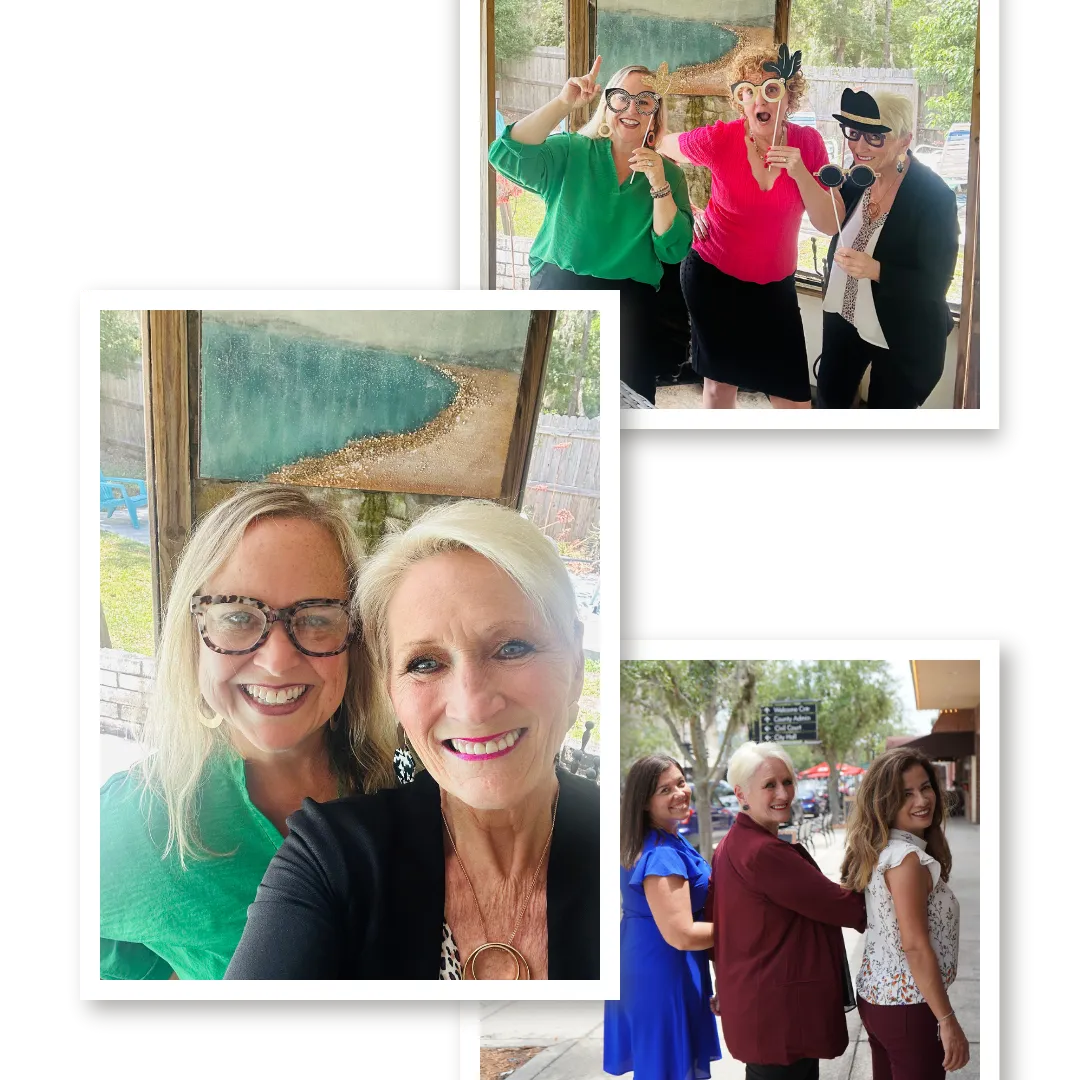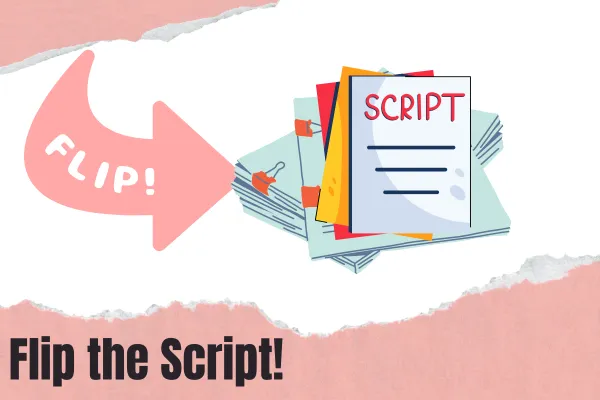Empowering Those Who Teach, Lead and Inspire
When You Thrive, Everyone Rises!


About Us
Move the Needle
on Teacher Retention
and Student Outcomes
We help educators cultivate thriving environments where motivation, connection and achievement are everyday realities for students and teachers.
Why Choose Us
Professional Learning and Coaching
that Educators Want and Need

Powerful Virtual Learning
and Ongoing Support
Bring your team to life with our high-energy keynotes, group coaching, professional learning retreats and virtual quests that spark lasting transformation. From "High Five to Thrive" to "The BOOST Playbook", our spotlight topics blend experience, research, humor and heart to uplift and empower. Perfect for schools, districts and organizations that support youth. Book now to deliver momentum that last long after the screen goes dark!

Keynote and Workshops
Our keynotes and workshops are more than professional learning—they’re a retreat that renews, equips, and inspires. Participants leave with fresh energy, practical strategies, and lasting tools they can use right away. We blend expertise in teaching, leadership, and multilingual learner support with proven approaches to wellness and retention. The result? Real-world solutions that help educators thrive—and when educators thrive, students succeed.

Cutting-edge Resources
Tailored for Today's Teachers
Our books and tools are crafted by educators, for educators—with practical strategies, time-saving templates, and easy-to-implement ideas that reflect the real challenges teachers face. Whether you’re looking to boost student engagement, support multilingual learners, strengthen teacher wellness, or build a thriving school culture, our resources deliver meaningful impact. Every guide, handout, and framework is thoughtfully designed to meet the needs of educators and students.
"Best Questers helped me to see that the teacher
I once was and the teacher I still want to be is not lost."
-Jamie White Lexington, KY
Popular Products
Choose Our Top Products
Books
Digital Resources
Merchandise
Learn more
Explore our collection of insightful books, with detailed descriptions and easy purchase options.
Learn more
Access a variety of digital resources, designed to support education, training, and professional growth.
Learn more
Showcase your passion for learning and development with our exclusive branded merchandise, perfect for educators, students, and professionals
Learning & Development
Best Questers Blog

Flipping the Script
Flipping the Script: The Real Journey from Hope Hacking to Hope-Filled Thinking
We've all heard that it takes about two months to form a new habit. In our book "High Five to Thrive," we call this 62-day journey toward positive thinking a "hope-habit." But let's get real—what does this transformation actually feel like? And more importantly, how do you power through when it gets tough?
The Daily Reality of Building Hope Habits
The shift from "hope hacking" (those automatic negative thoughts that steal our optimism) to "hope-filled" thinking isn't a straight line. Here's what the journey honestly looks like:
Early Days (Weeks 1-2)
What you'll experience:
Initial resistance: Your brain literally fights you. When you try to replace "I'll never get this right" with "I'm learning and improving," it can feel forced and artificial.
Cognitive dissonance: There's often an uncomfortable gap between your new hope-filled thoughts and deeply held negative beliefs. This creates internal tension that can be exhausting.
Frequent backsliding: You might catch yourself falling into old thought patterns multiple times a day, which can feel discouraging.
How to power through:
Start small: Choose just one negative thought pattern to work on rather than overhauling your entire mindset at once.
Use visual reminders: Put sticky notes with your replacement thoughts where you'll see them—bathroom mirror, computer monitor, car dashboard.
Celebrate tiny wins: Caught yourself mid-negative thought? That awareness alone deserves recognition.
Phone a friend: Tell someone you trust about what you're doing so they can provide support when you're struggling.
The Middle Phase (Weeks 3-5)
What you'll experience:
Increased awareness: You become hyperconscious of your negative thoughts, which is progress, but can initially feel overwhelming—like suddenly noticing how often you use a verbal filler.
Mixed results: Some days you'll feel momentum and others you'll wonder if anything is changing. This inconsistency is completely normal.
The "this is stupid" phase: Many people hit a wall where they question if this practice is worthwhile. This resistance is actually a sign the brain is being challenged to form new neural pathways.
How to power through:
Track your progress: Keep a simple tally of how often you successfully redirect a negative thought. Seeing the numbers grow is motivating.
Recruit a hope-habit buddy: Find someone working on similar goals to check in with weekly.
Create a "proof portfolio": Collect evidence that your new thought patterns are valid. Did someone compliment your work? Write it down. Small win on a project? Add it to your collection.
Refresh your approach: If reciting affirmations isn't working, try writing them, recording them, or setting them to music instead.
Finding Rhythm (Weeks 6-8)
What you'll experience:
First genuine moments: You'll experience your first authentic hope-filled thoughts that don't feel forced—these breakthrough moments are significant milestones.
Noticing differences: Situations that would have spiraled you into negativity might now only cause minor setbacks.
External validation: Others might comment on changes in your outlook before you fully recognize them yourself.
How to power through:
Journal the shifts: Document those breakthrough moments when positive thinking felt natural. Return to these entries when you're struggling.
Expand your practice: Start applying your hope-filled thinking to new situations or thought patterns.
Teach someone else: Nothing reinforces learning like explaining it to another person.
Create meaningful rewards: Plan something special to mark the halfway point of your journey.
Approaching Habit Formation (Weeks 9-12)
What you'll experience:
Less effort required: The hope-filled thoughts begin to form more naturally, requiring less conscious redirection.
Resilience building: You'll notice faster recovery from setbacks and disappointments.
Identity shift: You begin to see yourself as "someone who thinks hopefully" rather than someone "trying to be more positive."
How to power through:
Anticipate and plan for setbacks: Identify situations that might trigger old thought patterns and prepare your responses in advance.
Deepen your practice: Add meditation, visualization, or other complementary practices to strengthen your hope habit.
Build community: Connect with others committed to positive thinking through books, podcasts, or online groups.
Document your transformation: Compare notes from your early days to where you are now—you'll be amazed at the difference.
The Real Challenges
Emotional states: When you're tired, hungry, or stressed, your brain defaults to established neural pathways. These moments require extra compassion.
Environmental triggers: Certain people, places, or situations can automatically activate hope-hacking thoughts.
Vulnerability: Hope-filled thinking requires emotional courage; it means being open to disappointment rather than protecting yourself with pessimism.
The Magic Moment: When Hope Becomes Your Default Setting
Here's what ultimately happens—and this is the part that makes all the struggle worth it: One day, you'll be faced with a trigger situation, something that would normally send you spiraling into those old, worn-out hope-hacking thoughts. Maybe your boss gives you unexpected feedback, or you make a mistake on a project, or someone says something that would typically activate your insecurities.
And instead of immediately thinking "I'm terrible at this" or "Nothing ever works out for me," your brain will automatically offer up "I can learn from this" or "This is one moment, not the whole story."
That's the magic moment. When your hope-filled thought becomes your first response, not your hard-fought second one.
It feels like waking up one day and suddenly speaking a language you've been struggling to learn. The words just come naturally. The hope-habit has become your new automatic pilot.
This doesn't mean you'll never have negative thoughts again. But it does mean you've created a new neural superhighway in your brain—one that leads to possibility instead of limitation, to resilience instead of defeat.
Can You Really Do This?
Yes, you absolutely can—but here's the truth no one tells you: it's going to feel weird and uncomfortable and sometimes even pointless. There will be days when your inner critic is louder than ever. There will be moments when you wonder if you're just fooling yourself.
Push through those moments. They're not signs of failure—they're evidence that you're disrupting patterns that have been with you for years.
The 62-day timeline isn't random—it reflects the substantial neurological rewiring that's happening in your brain. This isn't a quick fix or a simple "think positive" exercise. It's deep, meaningful change that takes persistent, compassionate practice.
And I promise you this: the person waiting for you on the other side of those 62 days—the one whose first reaction to challenges is hope rather than despair—is someone you're going to really enjoy being.
What hope-hacking thought are you ready to flip today?
Success Stories That Inspire
Our personalized approach has made a real difference in the lives of educators and students.
Here’s what they have to say about their journey with us.

“Thank you so much for your dedication and commitment to the VIQI Project! Your partnership has been instrumental and we couldn’t have done this without you. Thank you for navigating your challenges so gracefully and for your unwavering support to the teachers and children of St. Lucie.”
-Isabel Acosta, Variations in Implementation of Quality Interventions (VIQI): Examining the Quality Child Outcomes Relationship in Child Care and Early Education

“Thank you so much for the time and attention you dedicated to provide sessions specifically tailored to build on our professional learning plan and for including every detail we discussed. Your attention to our district needs went above and beyond expectations. I’m very grateful for the feedback you were able to provide based on session discussions. It will serve to guide our next steps and follow up with administration.”
-Tracie Carollo, Secondary ELA Specialist/World Languages, Escambia County Public Schools
Best Collaborative Get-Togethers
Best Collaborative
Get-Togethers
Complimentary Resources and Connections
Live and Recorded Webinars
Downloadable Resources
Frequent Meetups
Social Media Community Building
Collaborative Live and Virtual Events with Golden Keys Foundation

Empowering Those Who Teach, Lead and Inspire
When You Thrive, Everyone Rises!
Links
Home
About Us
Blog
Store
Contact Us
Legal
Terms of Use
Terms & Conditions
Payment Method
Privacy Policy
Join Our Community
Join our community to stay updated on the latest courses, exclusive content, and learning resources. Subscribe now and take the next step in your educational journey!



